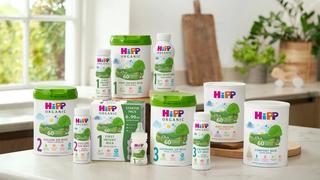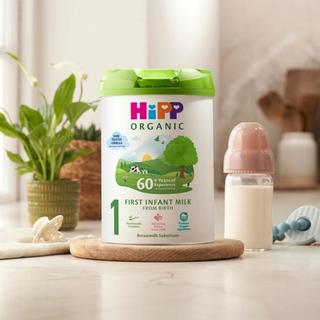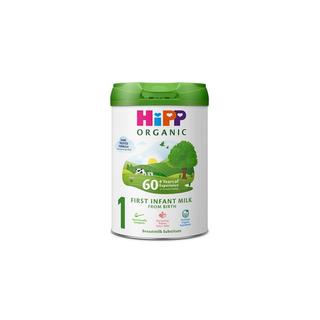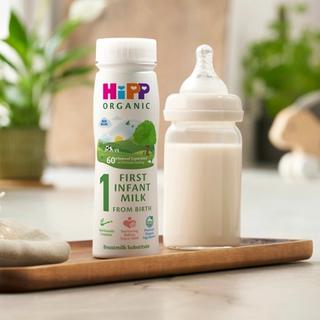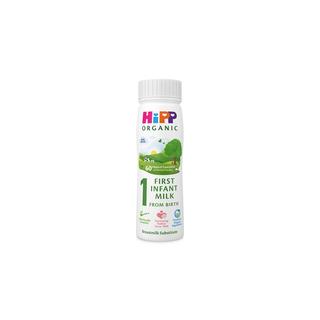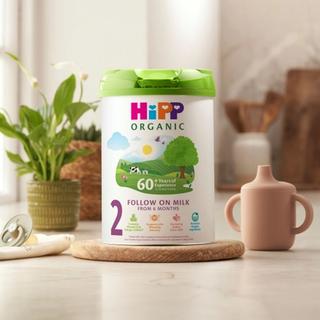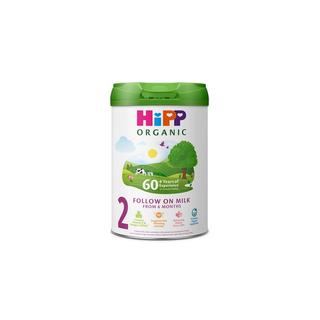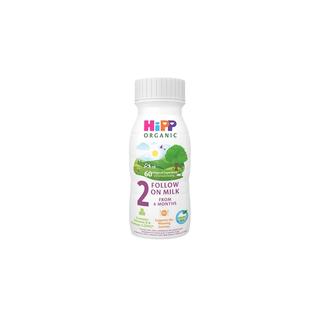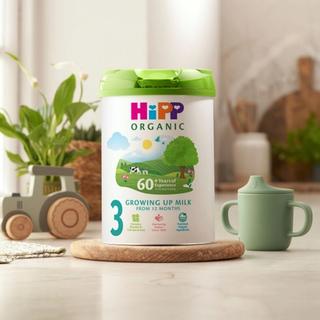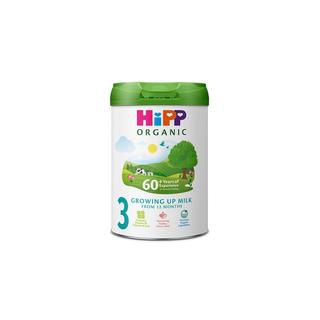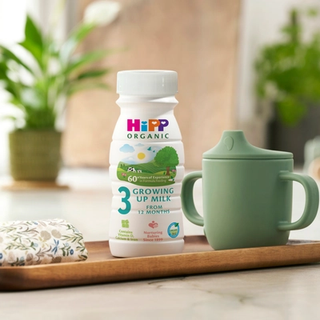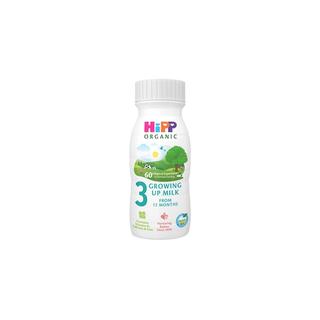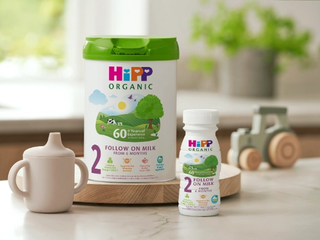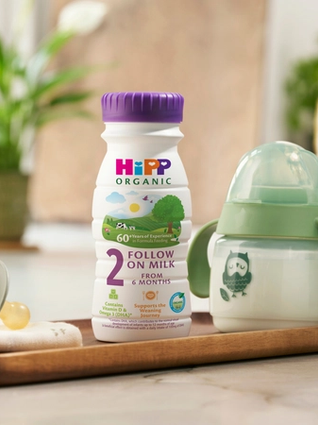
- Home
- Advice Hub
- Baby
- Baby Feeding
- First Infant Or Follow On Milk?
First Infant Formula vs Follow On Milk – What’s the Difference?
Find out what the difference is between first infant formula and follow on milk, and which ages both options are suitable for.
There is often confusion around the differences between first infant formulas and follow on milks. If you are planning on formula feeding your baby, either exclusively or combining with breastfeeding, this article will help you to understand the differences between the two.
Whilst it’s generally agreed that breastmilk provides the optimal nutritional components for babies, some parents choose not to breastfeed exclusively or may be unable to do so. First infant formula is a safe alternative or addition that can be given any time from birth onwards.
What is infant formula?
First infant formula, also known as "Stage 1" formula, is a type of formula designed for babies from birth up to six months of age. It is suitable for babies who are not breastfed or as a supplement to breast milk if they are not being exclusively breastfed.
It aims to closely mimic the nutritional composition of human breast milk and typically contains:
- Proteins: Formulated with whey-dominant proteins, which are easier to digest for newborns.
- Carbohydrates: Usually lactose, which is the primary carbohydrate in breast milk.
Fats: A blend of vegetable oils that provide essential fatty acids similar to those found in breast milk. - Vitamins and Minerals: Essential nutrients that are important for growth and development, including vitamin D, calcium, and iron.
Other Ingredients: Probiotics, prebiotics, and nucleotides to support the baby's immune system and gut health.
What is follow on milk?
Follow-on milk, also known as "Stage 2" formula, is designed for babies from six months onwards as part of a mixed diet that includes solid foods. Follow-on milk is intended to complement the weaning diet and provide additional nutrition as babies transition from exclusive milk feeding to solid foods.
When can babies have first infant formula?
First infant milks are perfectly suitable for babies from birth up to the age of 1 year and beyond. They provide valuable vitamins and minerals as well as energy and protein needed by babies when they reach the weaning stage and beyond. Generally, if a bottle-fed baby is happy on their infant milk there is usually no reason to change them onto a follow on milk just because they’ve reached the age of 6 months.
Some parents however, seem keen to move their babies onto the next stage of formula at this age and there is no harm in doing so.
When can babies have follow on formula?
Follow on milks are optional and are intended for use from 6 months onwards when a baby has moved onto a mixed diet including a range of foods. The formula along with a variety of foods will meet the nutritional requirements of babies at this age. The weaning process is usually gradual with many babies not regularly eating three solid meals a day for several months after foods have been introduced.
What nutritional benefits does follow on milk contain?
A key nutritional difference with follow on milks compared with infant formulas is that they contain significantly more iron. HiPP Organic Follow on milk contains twice as much iron as the first infant milk - 1mg vs 0.5mg iron per 100ml.
Other nutritional differences to first infant formulas include:
- Higher Protein Content: Follow-on milk typically has a higher protein content to meet the increased needs of older infants.
Increased Iron: The iron content is usually higher to support the baby’s developing body and brain. - Other Nutrients: May contain higher levels of certain vitamins and minerals, such as vitamin D and calcium, to support the growth of older infants.
- Different Carbohydrates: May include a variety of carbohydrates beyond lactose, such as maltodextrin or starch, to provide energy as the baby becomes more active.
- Different Fat Composition: The fat blend may be adjusted to support the nutritional needs of older infants.
Babies are born with a store of iron that generally lasts about 6 months and once this is depleted then external sources of iron (i.e. foods in the diet that are a good source of iron, such as meat, poultry, fish, eggs, pulses) are needed. In the absence of enough iron in the diet a baby is likely to become iron deficient which can make them tired and irritable and more susceptible to infections.
For babies that have been exclusively breastfed up to 6 months, there is a chance their iron stores may be low. Weaning foods containing iron should be actively encouraged at this stage. If a parent wants to introduce a formula at this stage either to replace breastmilk or to supplement it, an infant milk, which is closer to the composition of mature breastmilk, would be fine if sufficient iron sources are present in the weaning diet.
Choosing a follow on milk might on the other hand, offer greater assurance that the iron requirements are going to be met, particularly if a wide range of iron rich foods aren’t being consumed by the baby.
Breastmilk is ideal and contains everything your baby needs to support their healthy growth and development. If you decide to choose a formula milk for your baby however, hopefully this article has helped. If you are still in doubt about how to feed your baby you should discuss this with your healthcare professional.
Important Notice
We recognise that breastfeeding is best, providing many benefits to both mothers and infants. We also recognise that every parenting journey is unique, and we are here to support you through this journey, however you choose to feed your baby.
If you choose to breastfeed it is important that you eat a healthy well-balanced diet in preparation for and during breastfeeding. Before deciding to combination or formula feed your baby, note that reducing or stopping breastfeeding can be difficult to reverse. Babies feed on demand, so replacing breastfeeding with infant formula milk may reduce your supply. Formula feeding has both social and financial implications. Talk to your midwife or health visitor for guidance and support.
If you choose to use formula milk, make sure you choose the right milk for your baby’s age and prepare and store it according to the instructions on the packaging. Not doing so may make your baby ill. Infant formula is a nutritionally complete breastmilk substitute that can be used from birth. From 6 months you can choose to use follow on milk as part of a mixed diet and from 12 months you have the option to move onto growing up milk alongside a balanced diet.
